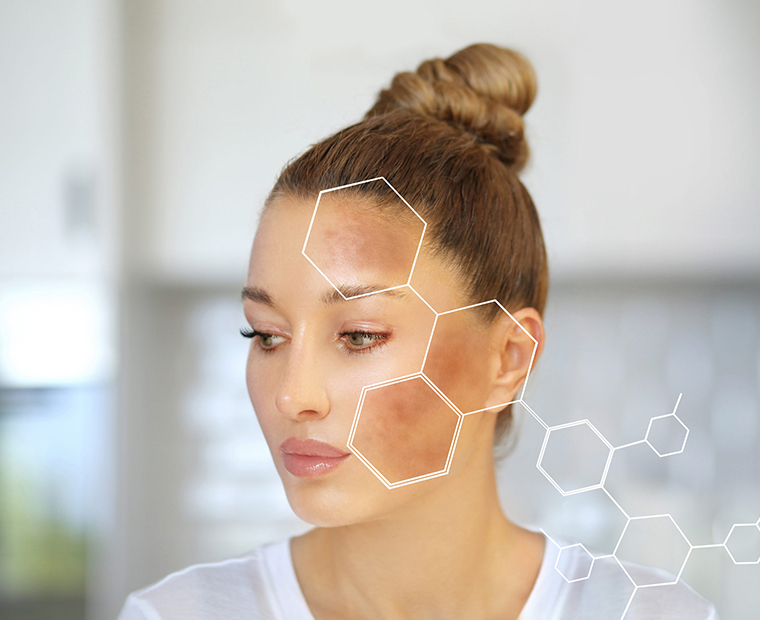Melasma

What are Melasma?
Melasma is a common skin problem that’s causing dark discoloration of the skin. The common sites of melasma are cheeks, bridge of the nose, forehead, chin, and upper lip of women and might be in men. Even those areas where sun exposure is not too high like shoulders, upper arms, and chest, melasma can appear. It is not itchy, painful, or raised.
Melasma Removal is Easy and Safe

Sun exposure plays a crucial part in the production of melasma.
Ultraviolet light (UV) activates the melanocytes of the skin, which cause darker pigmentation. A small quantity of sun exposure can cause melasma to return after fading. Melasma also worsens in summer due to greater exposure to sunlight.
- Visible illumination, such as light in a room or on a computer screen, may lead to melasma.
- Such UV sources, such as sunroof illumination, office window illumination, car-side windows, or sunroofs.
- Heat can also induce melasma, such as cooking and heat, in places of warm climates. Wearing metal-rimmed sunglasses absorbs more heat, which can make melasma worse. Frequent exposure to heat lamps, hairdryers, or lamps used to treat seasonal affective disorder can be caused.
- Hormonal shifts, such as those induced by breastfeeding, birth control pills, hormone-releasing intrauterine devices (IUDs), hormone replacement therapy, childbirth, or high quantities of soya intake, can also lead to the growth of melasma. Autoimmune thyroid disorders, chronic stress, or adrenal dysfunction often cause melanocyte-stimulating hormone (MSH).
- Phototoxic reactions are caused by fragrant or deodorant soaps, toiletries, cosmetics, and fragrances.
The Steps of the Procedure
Melasma is never healed, although it can be preserved. Care to minimize this disorder requires the use of: